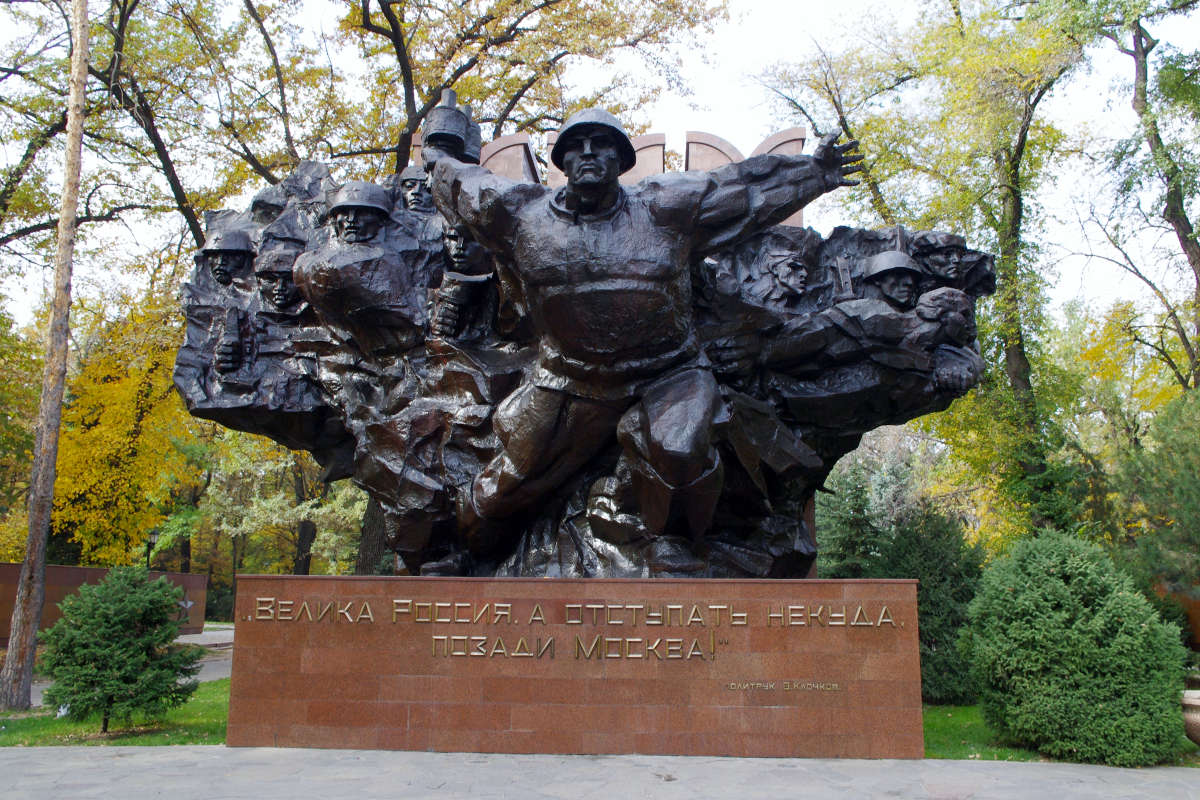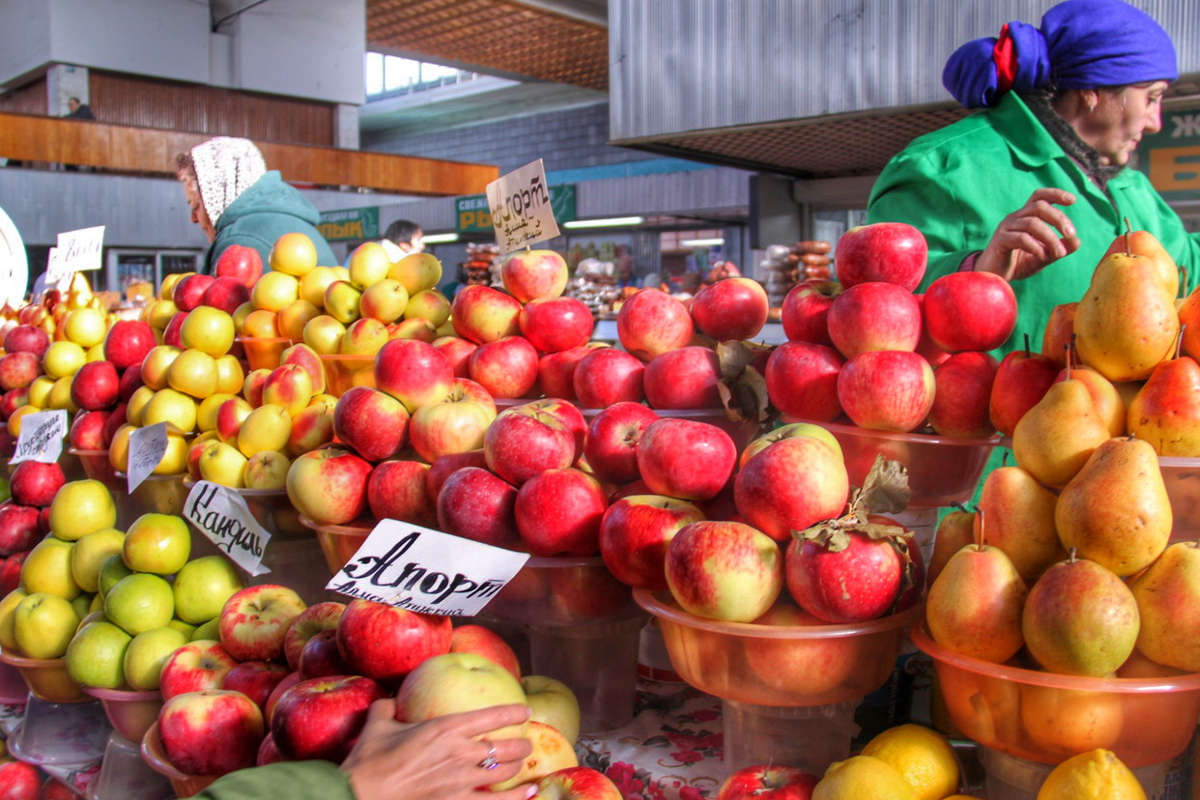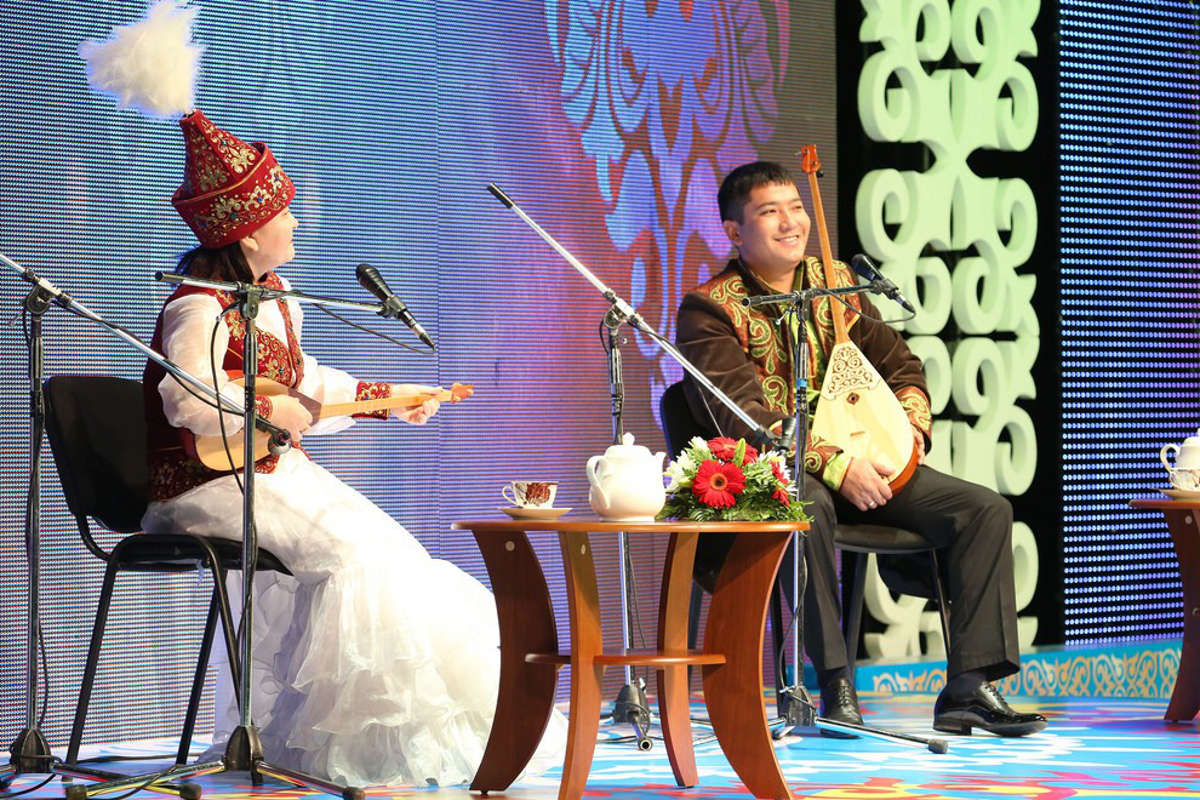A Week in Kazakhstan: Part 1 - Full of Apples
Touching down in Almaty International Airport late on a cool, autumn evening, the first thing that struck me was the impossibly wide, round hats of the airport security guards. The second thing that caught my attention was the distinctive, unfamiliar look of the local workers: Their hazel eyes and high cheekbones reminded me that I had indeed arrived in a country very different from other parts of Asia I had been to, a blank slate in my mind ripe for exploration. I ended up in this much-overlooked corner of the world by staring at a map while randomly punching in names of cities in the Kayak.com search bar that appeared within striking distance from my home in Beijing, hoping to find an interesting and uncrowded place to spend my October holiday. I knew virtually nothing about Kazakhstan going in, but a week later, I would be sufficiently smitten to begin shopping around for local job postings on line. In just seven days we would trek through a canyon and beneath a snow-capped glacier, gaze at a stunning 14th century mausoleum built by Tamerlane, and survive an unexpected encounter with the Kazakh border patrol.
After excitedly publicizing my discovery of direct flights from Beijing to Almaty at work, two colleagues decided to join me for the adventure: Mark, a good-natured and fun-loving economics teacher who would be my sparring partner in a daily contest to see who could down the most cups of Folgers, and Lisa, a no-nonsense biology teacher whose Russian skills would prove to be invaluable (especially in helping us to avoid horse meats while navigating the otherwise indecipherable menus).
Driving along the smooth surface of newly paved roads from the airport towards downtown it became clear that this country was not the poor, Soviet hinterland portrayed in the irreverent (and banned in Kazakhstan) 2006 Hollywood hit, “Borat.” The Bentley and Mercedes dealerships hinted at a recent explosion of wealth, fueled by the development oil reserves and other natural resources at the start of the century. Lisa had previously lived in Western Kazakhstan, and thus was able to enlist one of her old friends to help us rent an apartment for our first couple of nights in town using the equivalent of Kazakh Airbnd. We soon pulled up to our destination, an unassuming, Stalinist apartment block on a leafy side street. The apartment was cozy, if a little chilly (the government-regulated heating in these old buildings leaves something to be desired), but after piling on the quilts, we slept soundly.
I was up early the next morning, awakened by the brilliant rays of sunshine filtering through orange and gold leaves as they penetrated my bedroom window. Giddy with the excitement of exploring an unfamiliar place on the first day of vacation, I roamed the neighborhood in search of coffee. My spirit was instantly lifted by the stunning blue sky, snow-capped mountain views and peaceful calm of a city still slumbering on a Sunday morning, a sharp contrast from perpetually smoggy and cacophonous Beijing. While most restaurants were still shuttered, I did manage to locate a 24-hour cafeteria patronized by a smattering of cops, security guards, and a few young men who appeared to be putting the finishing touches on their Saturday night. There I had my first encounter with delicious Kazakh pastries, my favorite ones filled with a rich sort of cream cheese that remarkably managed to be both sweet and savory; in the week ahead, I would come to understand that this is a country that takes its sweets seriously. Eager to continue exploring, I returned to the apartment to round up my accomplices.
We set about leisurely roaming the pretty, tree-lined streets of Almaty, starting with the stunning, century-old Zenkov Cathedral. Inside, we quietly took in that particular variety of solemn, gilded beauty that is only found in Eastern Orthodox churches, decorated with frescoes of saints and bejeweled likenesses of the Virgin Mary. Outside, we encountered an sobering WWII war memorial featuring the steely visages of soldiers from all 15 Soviet republics, a stark reminder of the country’s not-so distant history and of the Russian influences that are still abundant in Almaty today, where about 1/3 of the population is ethnically Russian. Finally, we crossed the park to the Kazakh Museum of Folk Musical Instruments, a surprisingly fascinating institution where we marveled at the gorgeous artistry evident in the large collection of folk instruments fashioned from every imaginably local resource, from sliding stringed instruments made of sheep knuckles to a set of horse hooves designed for percussion.
Exiting the park, we were pleasantly surprised to encounter a bustling farmers market, where we had the opportunity to sample a wide range of Kazakh delicacies. Almaty’s famed apples (the city claims to be the birthplace of the apple, after all) lived up to their billing, and the endless varieties of fresh sausages, cheeses, breads, pickles, and sweets inspired us to stockpile picnic materials for our upcoming hikes in the mountains nearby. After plowing through a satisfying lunch of enormous, juicy lamb dumplings and plov (Kazakhstan’s mouthwatering take on rice pilaf) in the basement of the central market, we met up with Lisa’s former colleague Taras and headed towards Kok-Tobe, one of the city’s most famous (and weirdest) landmarks. After taking a cable car up to the top of a 1100 m hill on the edge of the city, we encountered a mind-blowingly random assortment of entertainment options: mini movie-theaters that purported to be 9D (that’s right, 9D!), “halls of mirrors” adorned with horrifying clowns reminiscent of Stephen King’s It, a giant pink climbing wall that no one seemed remotely interested in climbing, disinterested horses festooned in traditional garb for selfies, and a small zoo featuring an international assortment of colorful feathered birds. We finally decided to shell out a few bucks for the opportunity to shoot arrows from a crossbow gun at a giant, rubber rodent dangling from a rope in a tent, an experience that I have to admit proved to be much more gratifying than I had anticipated.
Sipping on our first local beers in the receding afternoon sunshine, Taras suggested we dash off to one of the theaters downtown, having seen online that there would be a folk music concert featuring renowned musicians from across central Asia that night. Thirty minutes later and with our $8 tickets in hand, we were treated to a mesmerizing performance by Turkish, Uzbek, Tajik and Kazakh masters of the dombra, one of the beautiful, guitar-like instruments we had seen earlier in the museum. The unforgettable performances ranged from stirring symphonies to raucous solos, and convinced me that I need to expand my Spotify playlist to include some Central Asian material.
Starved from a long day of exploring, we finished our evening with a feast of traditional Uzbek dishes in an inviting little restaurant selected by Taras. Here we experienced for the first time the glorious pairing full-bodied Russian beer with a stringy, smoky cheese called “chechel,” as well as the ubiquitous mountain of stewed lamb and baskets of fresh-baked bread. While we ate an elderly, Russian-looking man with a long, grey pony tail and a black leather jacket DJ’d in a corner of the restaurant near the door, supplying the patrons with a constant assault of Euro-trash pop music from enormous speakers while a gaggle of children six and under blissfully danced the night away in front of his card-table of a DJ booth.
Standing under the streetlights outside of the restaurant, we worked on flagging down a ride. The amazing thing about Kazakhstan is that anyone, at any time, can choose to transform into a taxi if the price is right. Fortunately, the country is incredibly safe, and no one seems to think twice about making cross-town trips with all manners of drivers and vehicles. On this night, our chariot was a lemon of a rusting, mid-90’s sedan, noxious gasoline fumes filling the interior. Fortunately, we arrived back at the apartment shortly, resting up for the next day’s hike to Big Almaty Lake, one of our most anticipated moments of the journey.
Eric Carlson is currently the Dean of Students at Beijing National Day School and hopes that his photo journals will inspire more people to #DieLiving










